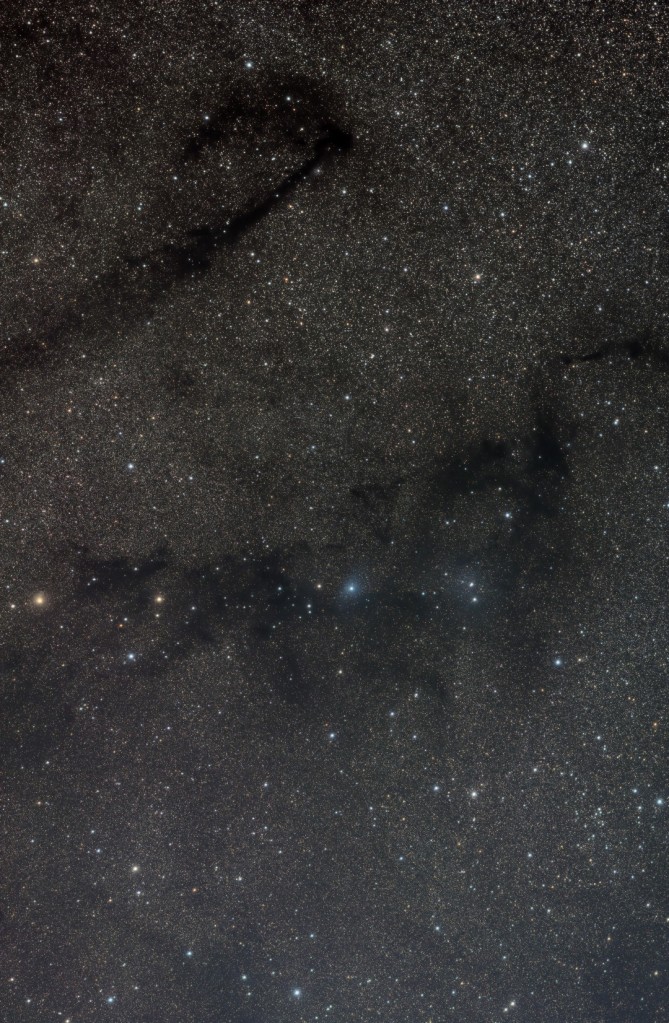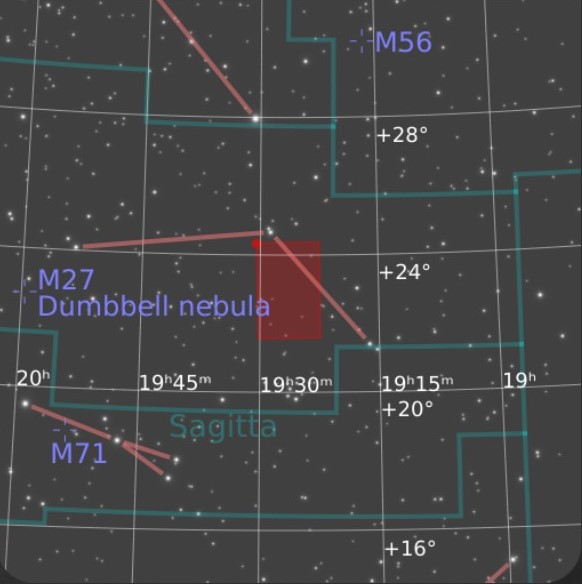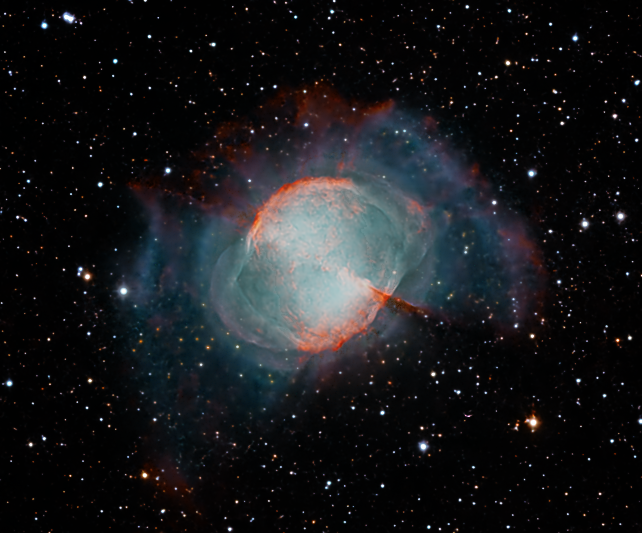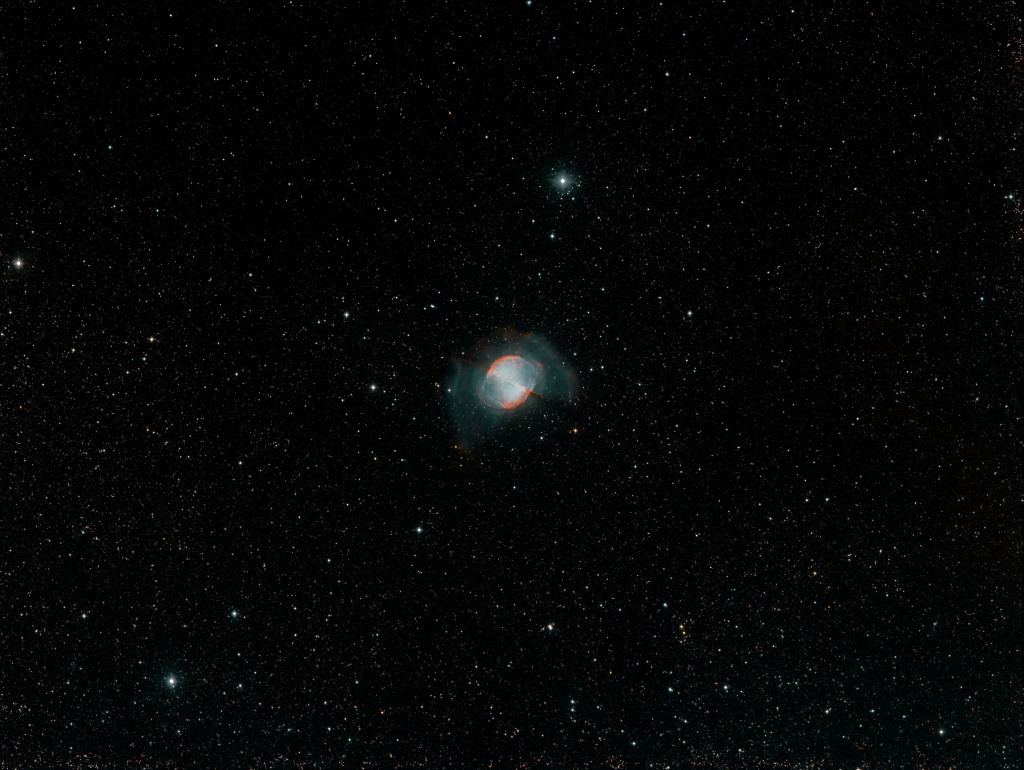Two months past the summer solstice in late August, shortly after the new moon, I was drawn to the constellation of Vulpecula (Latin for “little fox) and an interesting region of reflection and dark nebulae that provide good imaging possibilities. In particular, a vast area of stars in which the contrasting dark nebulae create some intriguing shapes.
At the centre of the resulting image, strung out from east to west (left to right), several of the dark nebulae seem to coalesce (visually) to create the form of a black cat: LDN 773, 774, 769 & 768; an alternative interpretation is that of the Loch Ness Montser. Further enhancing the image, the cat is adorned by two large, bright orange stars near its head and within the ‘body’ to the right, several various reflection nebulae created by hot blue stars (VdB 126 / LBN 133 & 134 etc.).
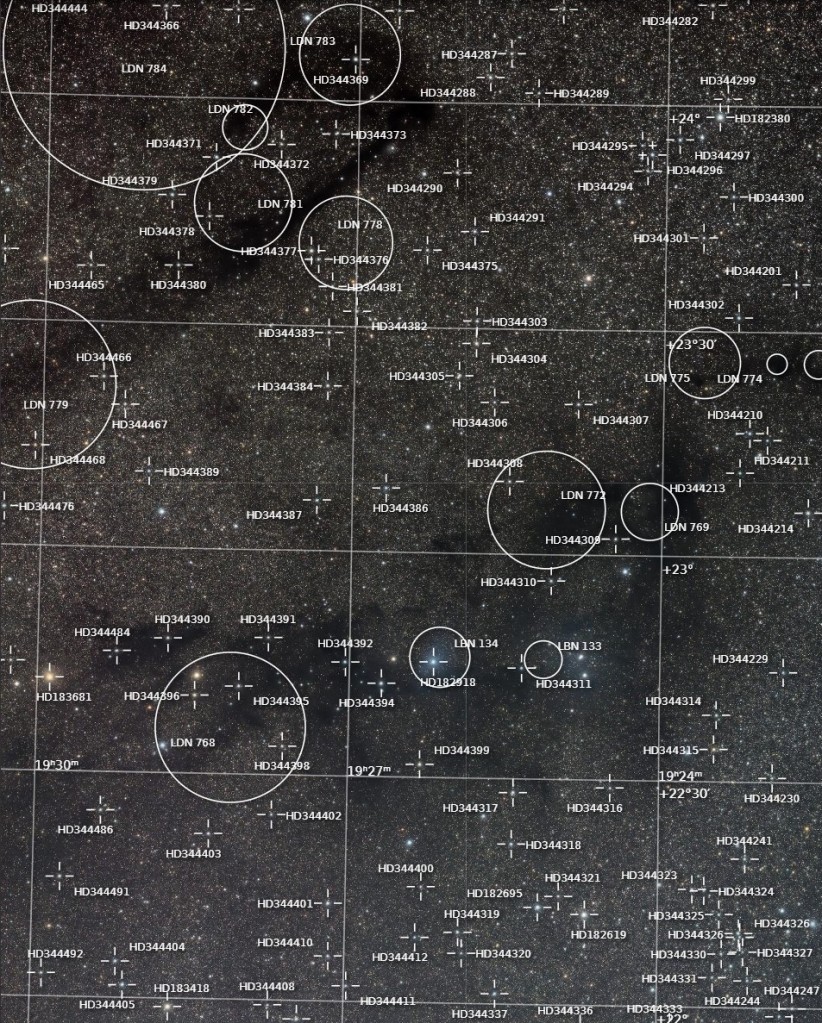
Moreover, above the cat’s head another group of dark nebula form what I’d describe as a furled umbrella (LDN 781, 782, 783 & 779). Finally, towards the lower right edge of the image (below the cat’s rear leg) is the open star cluster of NGC 6793.
Apart from its obvious beauty, the inspiration for this image was my four-year old granddaughter who just loves cats – especially her own one-eyed black cat!
| IMAGING DETAILS | |
| Object | LDN 768, LDN 772, LDN 781, Vdb 126, LBN 133 |
| Constellation | Vulpecula |
| Distance | Various |
| Size | Various |
| Apparent Magnitude | Various |
| Scope | William Optics GT81 + Focal Reducer FL 382mm f4.72 |
| Mount | SW AZ-EQ6 GT + EQASCOM computer control & Cartes du Ciel |
| Guiding | William Optics 50mm guide scope |
| + Starlight Xpress Lodestar X2 camera & PHD2 guiding | |
| Camera | ZWO ASI294MM CMOS sensor |
| FOV 2.87o x 1.96o Resolution 2.50”/pix Max. image size 4,144 x 2,822 pix | |
| EFW | ZWOx8 EFW & 31mm Chroma LRGB filters |
| Capture & Processing | Astro Photography Tool (APT), WBPP & PixInsight v1.8.9-2 |
| Image Location & Orientation | Centre = RA 19:26:24.59 DEC +22:58:04.2 Top = North |
| Exposures | L 52 x 120 sec, R 29x + G 25x, B 26x 180 sec Total Integration Time: 5hr 44 min |
| @ Gain 120 & Offset 30 @ -15oC | |
| Calibration | 10 x 120 sec & 180 sec Darks 20 x LRGB Flats & Falt Darks @ ADU 32,000 |
| Location & Darkness | Fairvale Observatory – Redhill – Surrey – UK Typically Bortle 5-6 |
| Date & Time | 21st 22nd 23rd August 2023 @ +23.00h |
| Weather | Approx. <18oC RH >=70% 🌙 >10% Waxing |

